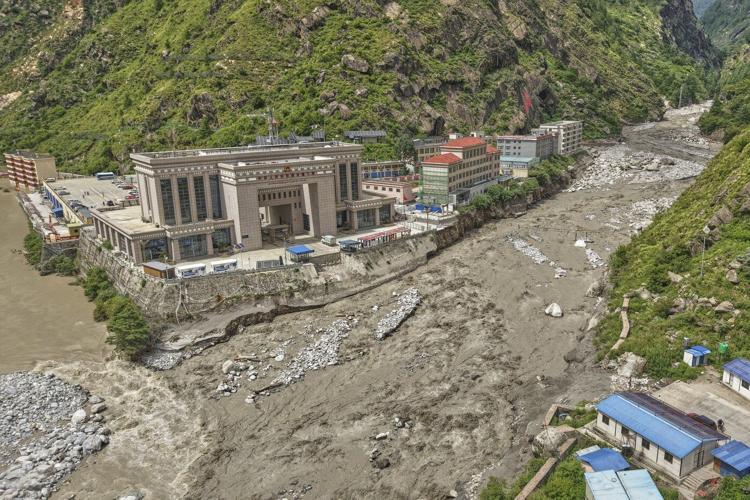December 4, 2025 | 00:47 GMT +7
December 4, 2025 | 00:47 GMT +7
Hotline: 0913.378.918
December 4, 2025 | 00:47 GMT +7
Hotline: 0913.378.918
The flooding of the Bhotekoshi River on July 8 also killed nine people and damaged an inland container depot that was being built to support increasing trade between the two countries. The 10 damaged hydropower facilities, including three under construction, have a combined capacity that could power 600,000 South Asian homes.

Frequent disasters expose climate risks to infrastructure in South Asia.
Another smaller flood in the area on July 30 damaged roads and structures, but caused less overall destruction. Elsewhere in the Himalayas, flash floods swept away roads, homes and hotels on Tuesday in northern India, killing at least four people and leaving many others trapped under debris, officials said.
The Himalayan region, which crosses Nepal and several nearby countries including India, is especially vulnerable to heavy rains, floods and landslides because the area is warming up faster than the rest of the world due to human-caused climate change. Climate experts say the increasing frequency of extreme weather has changed the playbook for assessing infrastructure risks while also increasing the need for smart rebuilding plans.
“The statistics of the past no longer apply for the future,” said John Pomeroy, a hydrologist at the University of Saskatchewan in Canada. “The risk that goes into building a bridge or other infrastructure is generally based on historical observations of past risk, but this is no longer useful because future risk is different and often much higher.”
While damage estimates from the July floods in the Rasuwa region are still being calculated, past construction costs give a sense of the financial toll. The Sino-Nepal Friendship Bridge alone, for example, took $68 million to rebuild after it was destroyed by a 2015 earthquake that ravaged Nepal.
The latest disaster has also stoked fears of long-lasting economic damage in a region north of the capital city Kathmandu that spent years rebuilding after the 2015 quake. Nepali government officials estimate that $724 million worth of trade with China is conducted over the bridge each year, and that has come to a standstill.
“Thank God there wasn’t much damage to local villages, but the container depot and bridges have been completely destroyed. This has severely affected workers, hotel operators, laborers, and truck drivers who rely on cross-border trade for their livelihoods,” said Kaami Tsering, a local government official, in a phone interview with The Associated Press.
Among those affected is Urken Tamang, a 50-year-old parking attendant at the depot who has been out of work for several weeks. A small tea shop he runs nearby with his family has also suffered.
“We’ve been unlucky,” said Tamang, a former farmer who sold his land and changed jobs when work on the depot began. He added: “The whole area was severely damaged by the 2015 earthquake, and just when life was slowly returning to normal, this devastating flood struck.”
(AP)

(VAN) Landmark SOLAW 2025 report reminds us that resources for food are not infinite.

(VAN) Climate change is a growing concern for agricultural productivity and several studies have focused on how climate variations can impact crop yields.

(VAN) In today's fast-paced society, with people busy with their work and social lives, many dream about quitting the rat race to experience a slower pace of life, which they imagine as being more poetic.

(VAN) Mindanao’s durian industry is reaping the benefits of rising global demand, with farmers now enjoying improved market access, better farmgate prices, and stronger profitability, the Department of Agriculture in Davao Region (DA-11) reported.

(VAN) Iraq is currently grappling with one of the most severe agricultural and livestock crises in its modern history.

(VAN) The Mediterranean and the Black Sea: Fisheries sustainability concerns remain, but overfishing drops to its lowest level in a decade, while aquaculture feeds more people.

(VAN) Cargill Inc has no plans to close its U.S. beef processing plants, days after meatpacker Tyson Foods l opens new tab announced it would shutter a Nebraska facility as industry grapples with cattle supplies.